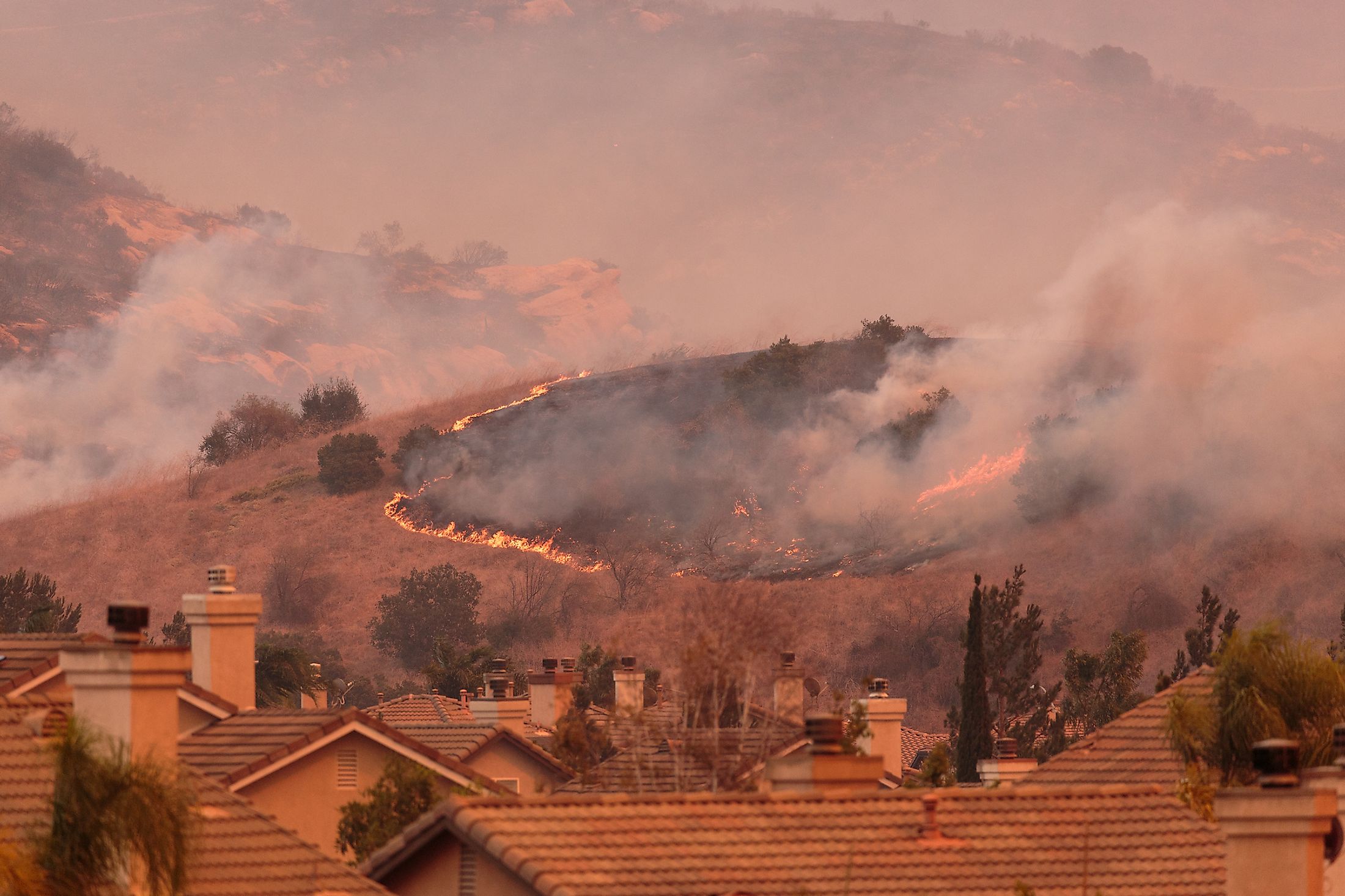
US States Worst Affected By Wildfires
The American West has recently been devastated by wildfires. According to the National Interagency Fire Center (NIFC), around 60,000 wildfires burn 8 million acres in the United States each year. Although there have been fewer wildfires overall since a decade ago, they are more deadly and devastating than before. Even while lightning is a clear-cut source of wildfires, the National Park Service has linked about 85% of them to human activity, including campfires, trash fires, powerlines, electrical issues, cigarettes, and arson. The states that are most severely impacted by wildfires are listed below.
1. California - 2,233,666 acres
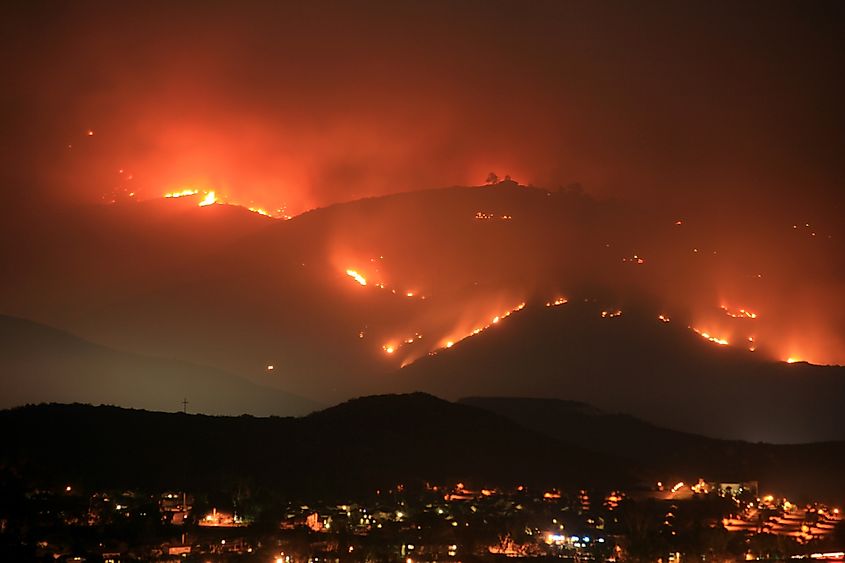
Recent reports show that California is the state most at risk from wildfires. California had a disproportionately high number of properties in danger of wildfire devastation. The increase in temperature is one of the most obvious ways that climate change is affecting California fires. After two years of drought, the soil moisture is reduced, which dries out the plant and increases its susceptibility to fire. Additionally, the vegetation in California was around 66% drier in the first half of June 2021 than it was in the corresponding period the previous year, which provided the ideal environment for wildfires to flourish.
2. Oregon - 828,777 acres
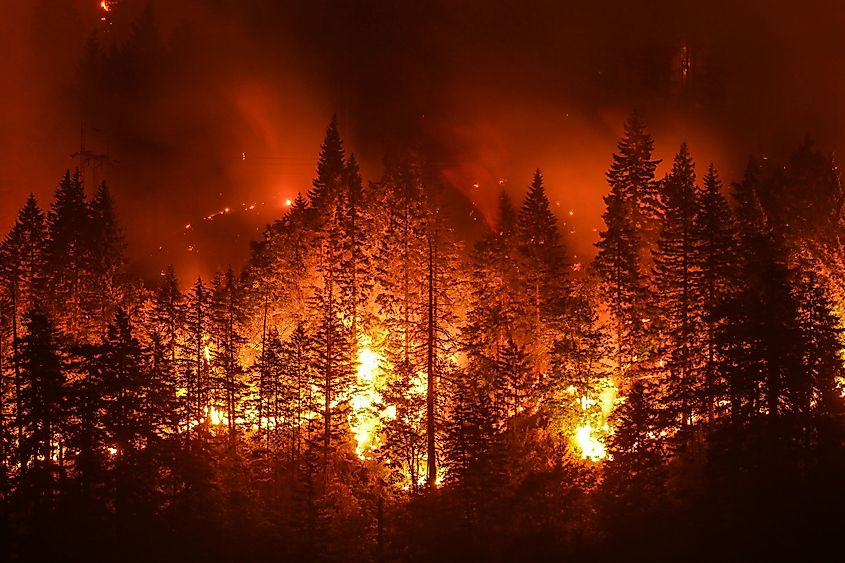
Wildfires are a regular occurrence in Oregon's woods, especially in the "dry forests" of the state. By the end of July 2020, humans were responsible for 90% of the wildfires in Oregon, compared to a yearly normal of 70%. This could be due to an increase in outdoor leisure brought on by the COVID-19 epidemic. Additionally, too dense woods have been produced because of fire suppression techniques during the previous 100 years, causing flames to grow larger and more destructive. The lengthening of Oregon's wildfire seasons may also be related to climate change. Another factor is that a lot of Oregon's wildfires are started by people. Backyard burn piles and unsupervised campfires are two major offenders.
3. Montana – 747,678 acres
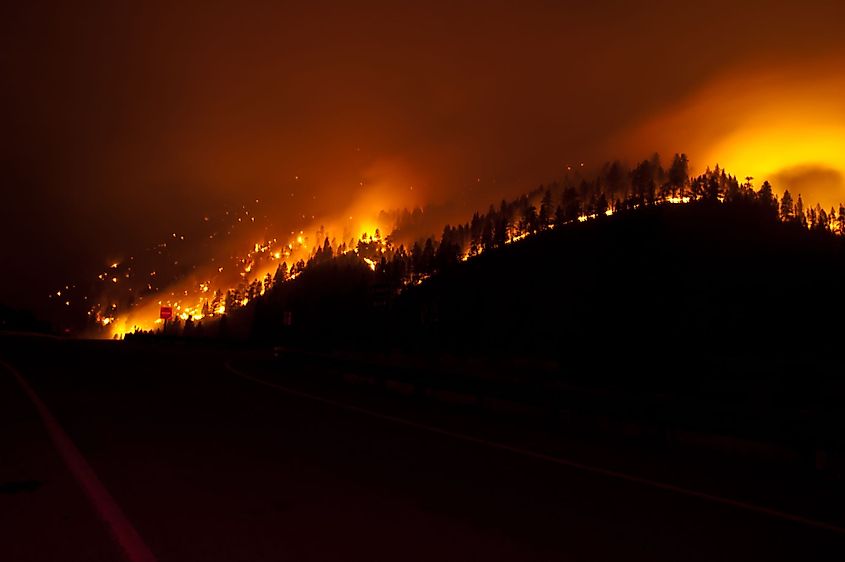
In comparison to other western states, Montana has had a greater percentage increase in the number of major fires over the past 45 years. Drought is one of the factors contributing to the rise of wildfires. Trees and other vegetation may become water-starved and more prone to fire as a result. Climate change is another factor. Because of the hotter temperatures and drier vegetation, which also lengthens the fire season, increase the likelihood of huge, devastating wildfires. The DNRC refers to this as the "wildland-urban interface," which indicates that the chance of wildfires impacting homes increases when people grow farther into areas with higher wildfire risk. This is another explanation for the increase in wildfire vulnerability.
4. Washington – 674,222 acres
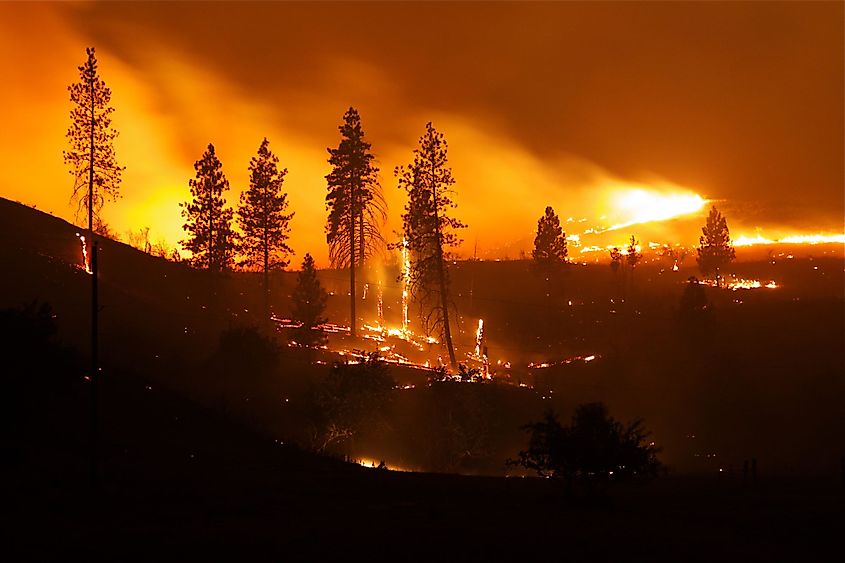
The 2021 wildfire season in Washington was difficult due to the state's hot, dry weather. Early July is normally when Washington's wildland fire season starts, and it typically lasts until late September, when the state's regular rainy season begins. However, there have been wildland fires every month of the year. Due in major part to minimal rainfall in winter and spring, the state had an early start to the wildfire season.
5. Arizona – 524,428 acres
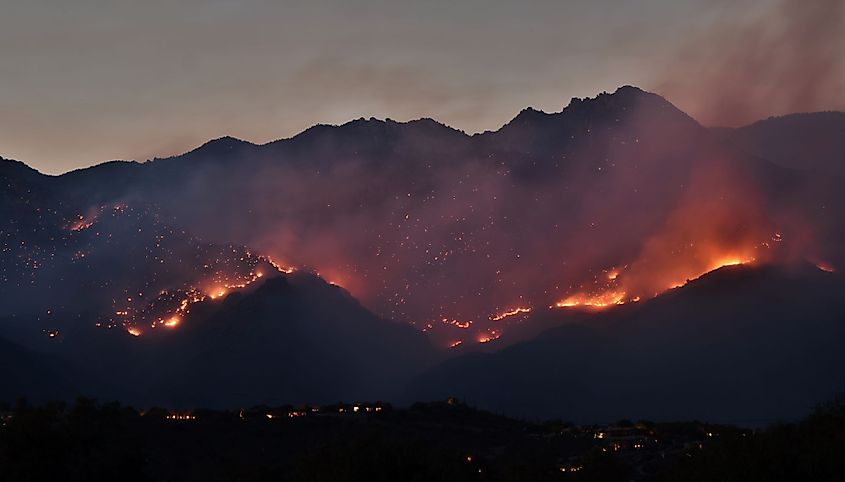
Fires can occur any time of year in Arizona. More than 80% of the fires in Arizona in 2020 were started by humans. Across the state, almost 980,000 acres of state, federal, and tribal lands were destroyed by 2,520 different wildfires. The state's woods and desert regions are exceedingly dry due to winds, a protracted drought, and high temperatures. The most frequent causes of wildfires in Arizona are pulling trailer safety chains, rims from flat tires impacting pavement, people parking or driving over dry vegetation, carelessly thrown cigarettes, neglected campfires, equipment use and waste pile up around homes and property, fireworks, and the discharge of weapons in regions with dry vegetation.
6. Idaho – 439,600 acres
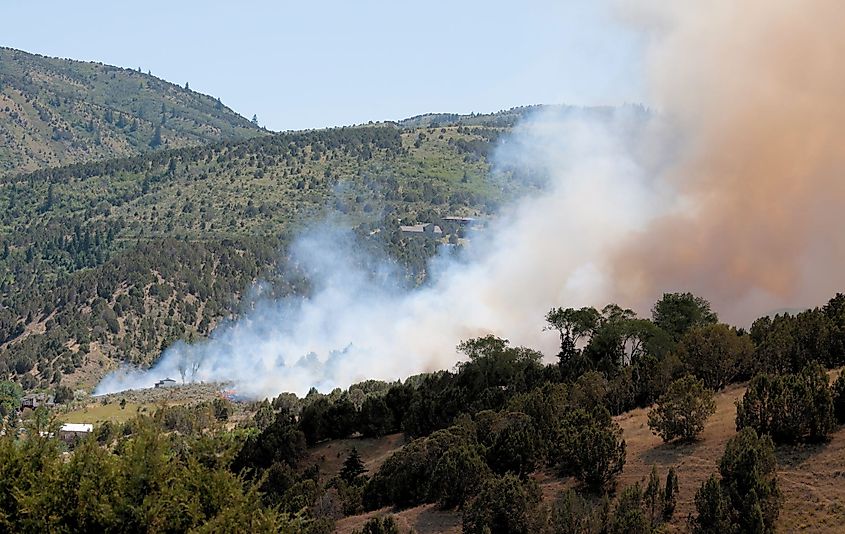
In recent years, wildfires, insect outbreaks, hot temperatures, and drought in Idaho have all contributed to problems in state forests. According to NIFC, more than 45,000 wildfires had consumed just under 6 million acres in 2021. In the same year, the state battled 408 wildfires, of which 254 were caused by people and 154 by lightning. Campfires, pyrotechnics, smoking, using guns, arson, and trailer hitch chains are a few of the main causes of these wildfires.
7. Alaska – 253,357 acres
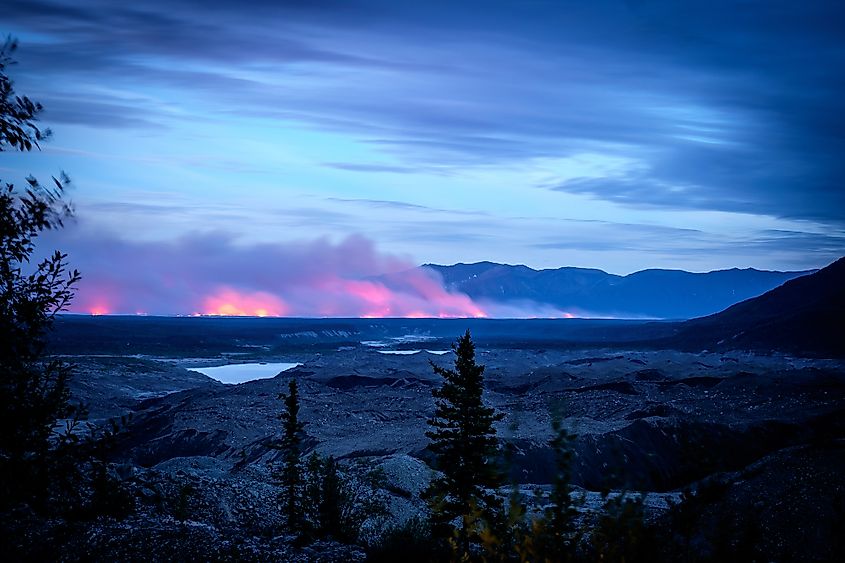
Alaska experiences the driest and warmest months in the summer when wildfires frequently break out on its territory. More than 1 million acres had burned by mid-June 2022. That area had grown to well over 2 million acres by early July, more than doubling the extent of an average Alaskan fire season. The spark came from a thunderstorm outburst in the southwest in late May and early June. The quantity of fuels—plants and trees that can be burned—has also expanded because of global warming. As a result, an active fire season is fueled by weather conditions such as the warm spring, little snowpack, and unusual thunderstorm activity as well as long-term warming that has allowed vegetation to thrive in southwest Alaska.
8. Texas – 168,258 acres
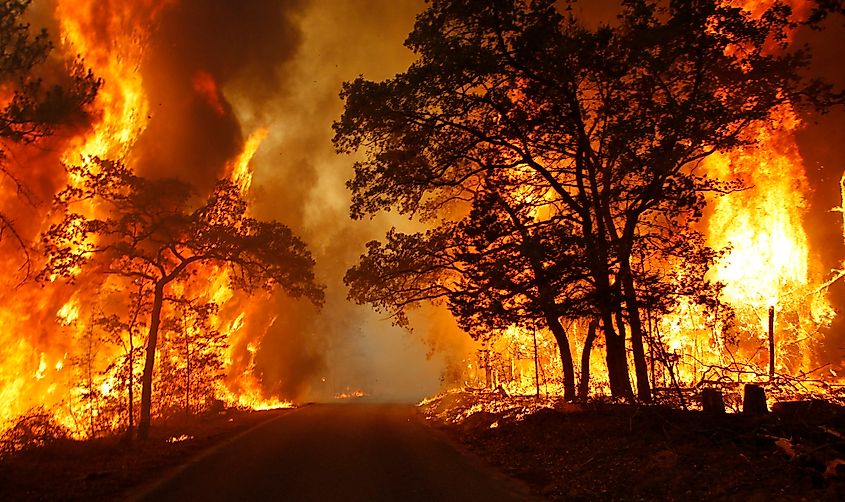
Texas heat is now hotter and lasts longer due to climate change, intensifying the drought conditions that encourage massive fires. About 40% of the state — mostly north and west Texas — is now in a severe drought, meaning soil moisture is very minimal, crops fail to germinate, and the fire threat is greater. Texas has more forest and warmer temperatures than California, yet it doesn't have as many fires as that state does. This may be because 95% of Texas's land mass is privately held, and these owners take good care of their property.
9. Kansas – 163,982 acres
High winds and dry grass are still causing catastrophic wildfire conditions throughout Kansas after months of drought. Nearly 5,000 vegetation-related fires that required the assistance of Kansas fire departments in 2021 resulted in two fatalities, 20 injuries, the burning of more than 185,000 acres, and the destruction of more than 40 buildings. Overall, the fires cost property owners nearly $4 million in damages. The state received some timely precipitation before the drought began, which encouraged additional grassland development. But those grasses were gone by the time winter came. As a result, there is now a very high fuel load in the form of dry grass in the state that could perhaps catch fire.
10. Nevada – 127,427 acres
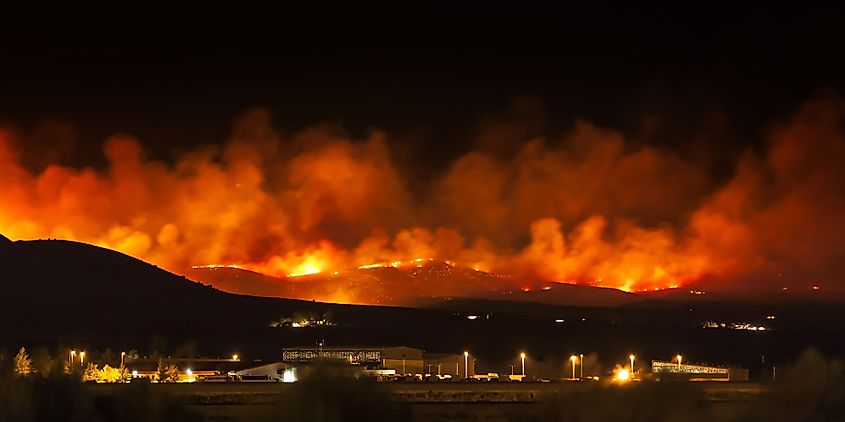
In Nevada, there are hundreds of wildfires every year. The state has witnessed particularly destructive wildfires over the past two years, with the 2018 Martin and Sugarloaf Fires alone destroying roughly one million acres of property in northeast Nevada. The state has become particularly vulnerable to hazardous fire seasons because of years of extremely dry weather and the introduction of invasive plants like cheatgrass. Large quantities of dry fuel also cause more unpredictable burning conditions and intensify fires.
Every year, 87% of all wildfires are caused by humans, on average, across the country. People, therefore, have a significant impact on averting such disasters. Wildfires that could have been prevented endanger people, property, and our valuable natural resources. Just a few easy precautions, such as properly putting out a campfire or maintaining your car to avoid sparks, can help reduce the risk of wildfires. By acting together, we can save the earth.
20 US States Most Affected By Wildfires
| Rank | State | Number of acres burned in 2021 |
|---|---|---|
|
1 |
California |
2,233,666 |
|
2 |
Oregon |
828,777 |
|
3 |
Montana |
747,678 |
|
4 |
Washington |
674,222 |
|
5 |
Arizona |
524,428 |
|
6 |
Idaho |
439,600 |
|
7 |
Alaska |
253,357 |
|
8 |
Texas |
168,258 |
|
9 |
Kansas |
163,982 |
|
10 |
Nevada |
127,427 |
|
11 |
New Mexico |
123,792 |
|
12 |
Oklahoma |
113,235 |
|
13 |
Florida |
105,475 |
|
14 |
Minnesota |
69,405 |
|
15 |
Utah |
60,863 |
|
16 |
Wyoming |
53,496 |
|
17 |
North Dakota |
49,347 |
|
18 |
Colorado |
48,195 |
|
19 |
South Dakota |
43,620 |
|
20 |
Missouri |
40,262 |











